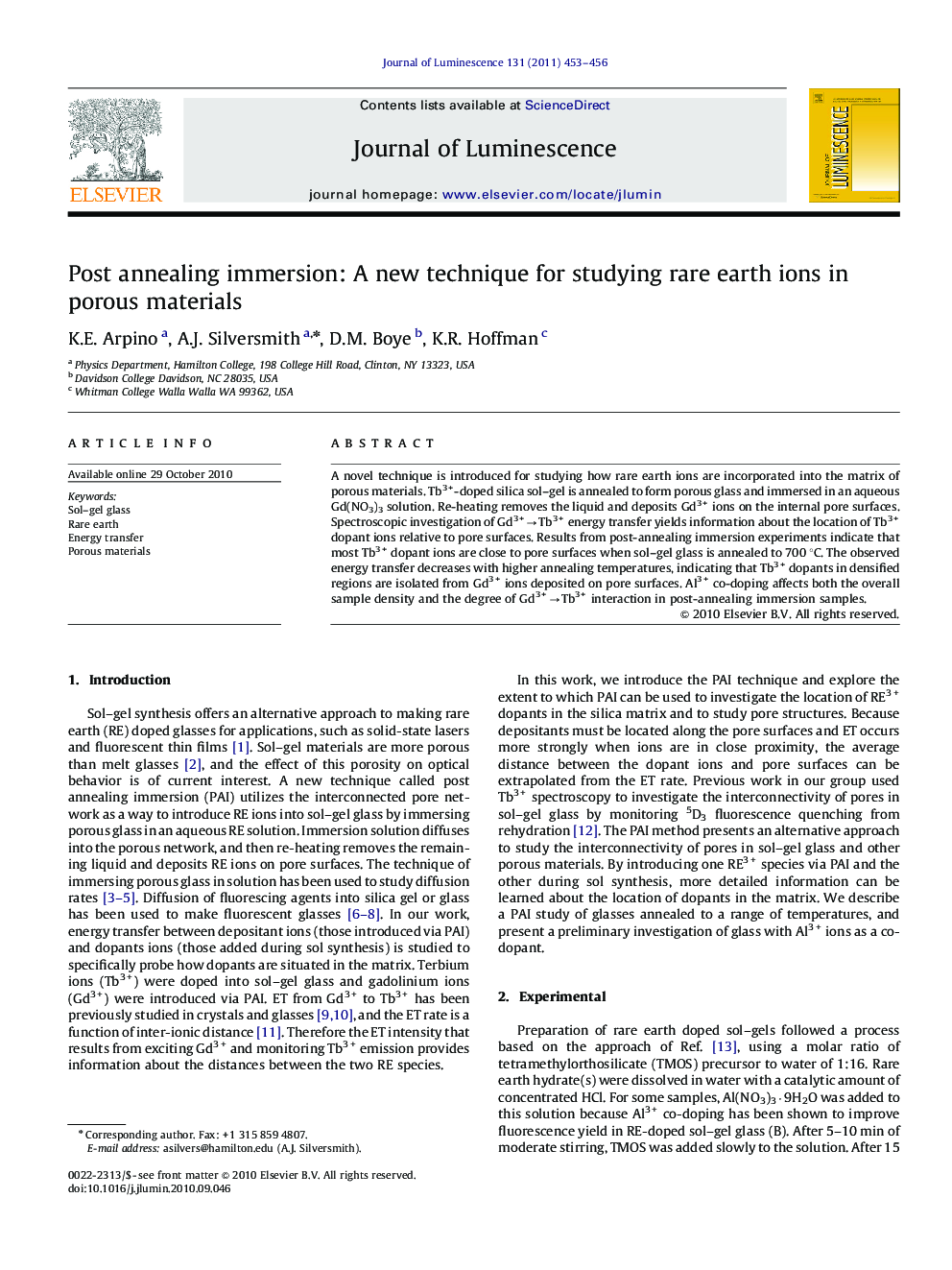| Article ID | Journal | Published Year | Pages | File Type |
|---|---|---|---|---|
| 5402143 | Journal of Luminescence | 2011 | 4 Pages |
Abstract
A novel technique is introduced for studying how rare earth ions are incorporated into the matrix of porous materials. Tb3+-doped silica sol-gel is annealed to form porous glass and immersed in an aqueous Gd(NO3)3 solution. Re-heating removes the liquid and deposits Gd3+ ions on the internal pore surfaces. Spectroscopic investigation of Gd3+âTb3+ energy transfer yields information about the location of Tb3+ dopant ions relative to pore surfaces. Results from post-annealing immersion experiments indicate that most Tb3+ dopant ions are close to pore surfaces when sol-gel glass is annealed to 700 °C. The observed energy transfer decreases with higher annealing temperatures, indicating that Tb3+ dopants in densified regions are isolated from Gd3+ ions deposited on pore surfaces. Al3+ co-doping affects both the overall sample density and the degree of Gd3+âTb3+ interaction in post-annealing immersion samples.
Related Topics
Physical Sciences and Engineering
Chemistry
Physical and Theoretical Chemistry
Authors
K.E. Arpino, A.J. Silversmith, D.M. Boye, K.R. Hoffman,
